Gathering Low Cost Firewood
Fireplaces and wood stoves are more efficient with each new decade. Heatilators, inserts, blowers, and a host of heating bells and whistles have rekindled the desirability of wood heat. Today, the key for enjoyment of that wood heat is in discovering many hot firewood resources that balance best with the checkbook.
Department of Energy figures reveal that the average cost of delivered cordwood nearly doubled in the last 10 years. By contrast, in that same period, the cost of utilities in most of the nation stabilized. The stark difference in cost between firewood and utilities combined to create the greatest decline of wood heating in history.
Further statistics released this year by California-based Hearth Products Association (HPA) show that while many homes have wood heat devices, less than 15% are heated by wood as the main energy source. The HPA stresses that a prime reason for the decline is the spiraling cost of firewood. The nationwide average of $125 per cord can dampen fireplace spirits.
Many folks enjoy the aesthetics of a toasty fireplace or woodstove. But given the significant disparity between the costs of firewood and utilities, more folks now figure that they benefit financially by turning up the there thermostat. For those who desire wood heating in spite of the cost, firewood cost-cutting tactics exist to provide both money in the pocket and a glowing hearth.
Following are five practical ways to acquire a regular supply of quality cordwood and kindling at low or, in some cases, no cost. Many of these tips can be put into practice no farther away than your community’s back yard.
Free Firewood from the Forest Service
 Forest Service firewood permits are available to state residents. For most states, the average for such permits is $10 a cord, usually with limits of between five and ten cords a year per household.
Forest Service firewood permits are available to state residents. For most states, the average for such permits is $10 a cord, usually with limits of between five and ten cords a year per household.
Even better, many ranger districts offer free permits, usually for two to five cords a year. The downside is that the permittee must collect, split, haul and stack the wood. The type and amount of wood, though, can be well worth the labor.
My own free wood-hauling permit allowed a harvest of two cords of downed, easily accessible, old-growth fir. Leftover logging rounds and limbs, it was all superb firewood, easily splittable, and would have cost as much as $150 per cord from many firewood suppliers. For the combined $45 cost of a rental chain saw and newly purchased splitting maul, I saved as much as $250, gas included. It was a month’s worth of exercise that also paid off in the fireplace.
Those two cords lasted three months. Consumed during the coldest part of winter on the Oregon coast, the savings in utilities was $180. That savings, plus free firewood, is household budget mathematics that equals dollars and sense.
Road Clearing and Utility Cutting

Another free resource is the stacks of wood often left for gleaning by road commission and utilities department tree-clearing crews. Frequently required to clear highway and power-line easements, their pains can be a fireplace gain. The wood can be of any variety, so the discriminating harvester is best off biding his or her time. On the other hand, get it while the getting is good, or someone else will.
At the edge of a turnout on a major highway near my home, I recently collected a full cord of firebox-length alder, the result of efforts by a road crew. If not for an alert neighbor, my total could have been two cords. While not the best firewood, alder runs about $100 a cord in my area. That savings is $100 more in my pocket.
Private Tree Trimmers
Private tree trimmers, like roadside cutting crews, are sometimes eager for someone to haul their cuttings away. Some even pay a fee for such service. A well-timed proposal can reap a nice haul of free fuel, depending on the situation and the tree trimmer. More than one tree trimmer also sells cord-wood at reduced prices.
One tree cutter who advertises on shopping center bulletin boards is happy to hear from those in need of firewood.
“I don’t make a living with firewood,” says Dale Russell, of Lake Cutting Service in Seal Rock, Oregon. “But, firewood for sale earns vacation money.”
Russell recommends that customers follow his lead and place ads in newspapers or on bulletin boards. He also touts the effectiveness of staking a well-placed “Firewood Needed” sign by the road, including phone number and type of wood sought. Russell adds that he and most tree trimmers usually are not “professional” firewood haulers. Consequently, tree trimmers are often open to negotiating price. He asserts that deal-seeking customers who ask him, “Will you take less?” usually receive a five-to-ten dollar discount on full cords.
Consumer Tips
While the easiest, but most expensive, method of obtaining fuel is by way of the firewood delivery person, a few easy-to-follow steps may reduce costs and potential hassles. Consider the options: Many firewood dealers advertise on bulletin boards, as well as in the yellow pages. After copying several phone numbers, compare costs.
Reputable wood haulers recommend that new clients ask whether the amount of wood promised is an actual cord (by measurement, a cord is a tight stack of wood four feet wide by eight feet long by four feet high). Another reasonable query concerns seasoning. Dry wood catches fire easier than unseasoned. If it’s important to burn the wood now, check out how dry it is.

Estimates from the Oregon Department of Energy reveal that dry wood has a moisture range of 20%, as compared to 60% in unseasoned wood. The difference in ranges relates directly to BTU output. Nearly one-half of total energy is consumed by wet wood in a steaming process. So obtaining seasoned wood, and keeping it dry, goes a long way toward big savings and conservation of time, effort, and a valuable resource: trees.
One veteran firewood hauler agrees that establishing wood dryness is important, and says it is easy to spot. “I don’t care what kind of wood it is,” asserts wood-hauler Socorro Acevez, “the wetter it is the more pitch you’ll have in your chimney. A crusty layer of pitch and soot can catch fire,” he says, “so I never burn any wood that is not dry.”
According to Acevez, dry, split firewood tends to be lighter than wet wood, both in color and weight. Also, seasoned wood tends to have off-color bands, or striations. For example, Acevez says that fir is well-seasoned when he can see clusters of inch-wide, burgundy-colored bands on cross sections of split chunks. That’s what he prefers to burn, and what he reserves for special customers.
Acevez recommends that customers specify in advance the kind of wood they want. With split wood often preferred over limb wood, he cautions that customers make sure beforehand what they bargain for. Length, too, is a factor. Stove wood is usually shorter than pieces burned in full-length fireplaces.
Also, Acevez says that tight-grained oak and medium-grained fir burn hot and long, compared to softer alder and spruce. Alder and spruce may be cheaper, per cord, but usually put out half the BTUs of oak and fir. He confides that a client’s real money’s worth lies in the species they order. If in doubt, and the delivery person lives fairly close, eyeball the particular stack in question. After all, you may even want to haul it yourself, possibly at a substantial savings of some 10 to 25 percent.
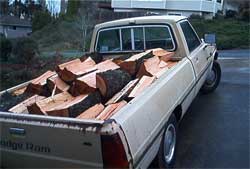 Whether hauling wood by oneself or having it delivered, Acevez advises that many problems can be resolved early by defining exact terms. He says that nearly all of his deals made by telephone are consummated exactly as negotiated. With some haulers, though, misunderstandings can happen.
Whether hauling wood by oneself or having it delivered, Acevez advises that many problems can be resolved early by defining exact terms. He says that nearly all of his deals made by telephone are consummated exactly as negotiated. With some haulers, though, misunderstandings can happen.
Not long ago, I called a hauler for price comparisons on delivered firewood. Agreeing to provide a cord of old-growth fir from a commercial harvester, the delivery person quoted $80. The deal nearly failed, though, when another person called back to confirm a higher price. The delivery man telephoned not long after and cleaned up the untidy error.
One victory won, I neglected to negotiate delivery and stacking into the price. The delivery was made as scheduled, but I had to laboriously stack the wood myself. Late stacking negotiations broke down due to an early haggling oversight.
Obtaining kindling is another important factor in the wood box equation. Sometimes, small limb wood and gleanings can be had from commercial trimmers and firewood deliverers. More resources are lumber stores, lumber mills, and construction sites. Frequently, these places are happy to give their excess scrap away. Well-placed phone calls or visits can result in old pallets, scrap two-by-fours, or bundles of limb wood.
It’s best to burn clean, dry wood. Firewood that is unseasoned, or dried wood stacked in a damp environment, dramatically reduces firebox efficiency, and leads to more frequent maintenance problems.
Most of these ideas can be adapted to any locale. For example, many urbanites reside less than an hour from rural harvesting possibilities, and tree trimmers and forest service offices can provide a wealth of firewood information. Operating a fireplace or woodstove can be cheap, though not easy, even if you don’t own your own woodlot.
Additional Research:
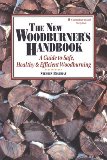  |
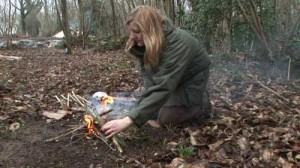

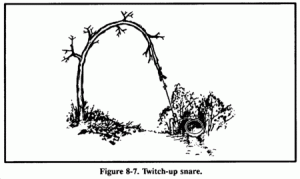

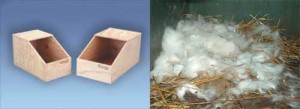
Leave a Reply